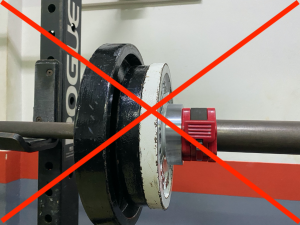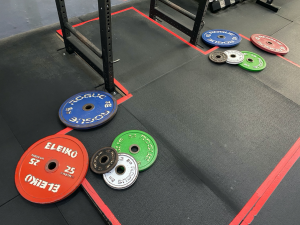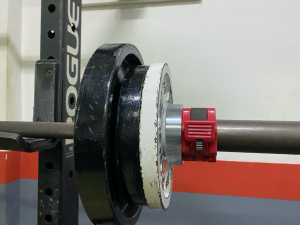Hello! Welcome to our gym! Is this your first time here?
I see, no problem. Please help to fill in this form.
Great, thanks!
The changing room is right at the back, on your right. I’ll be here if you need me. Happy training!
That’s a typical conversation if you are coming to a new gym or for a drop-in. Some gym rules might be shown somewhere in the gym or verbally mentioned to you at the start. More often than not, the rules are not clear, and some are not even written. Being the nice guy you are, you want to maintain a peaceful training environment. You wouldn’t want to piss the gym staff or potentially the other gym users, would you? Of course not. You are nice that way.
So here it is, the UNSPOKEN RULES of the strength gyms.
Topic #1: Dealing with the finite equipment resource
Don’t you hate it when you can’t find a certain weight only to know that it’s lying somewhere else? Then you see that that dude might be using it, so you went to that dude and asked, “Hey bro, are you still using the 5kg plates?” “Oh no, bro! I’m done! Go ahead and take it!”
Some people just conveniently place everything around them for their convenience for the later sets/exercise. Stop being that guy, and be the nice guy who returns their equipment IMMEDIATELY after you’re done.
One of the perks of using the barbell as your training modality is that there’s an infinite way to load your weight. If you are lifting 100kg, you can either use a pair of 25s and 15kgs or two pairs of the 20s. And then, there’s this guy who uses all of the lighter plates to get to the working weight. Stop being that guy!
Same logic as the one above, we want to be more considerate of the other lifters. If you are using all the 5kg plates in the gym, do people need to wait for you? Stop being the plate hogger! Although there’s only one scenario when it’s acceptable. That’s if you are using all of the 25kg plates to squat 500kg. In this case, you are not a douche; you are a hero.
Topic #2: Hygiene of the equipment and the gym
Nuff’ said. Keep everything clean after you used it. Being the bench (wipe off your sweat stains); the barbell & the weights (brush off the chalk and sanitize); or even the toilet (dude, aim properly!)
This is especially important during this trying time of the pandemic. We come to the gym to be stronger, increasing our fitness level, and stay healthy. Let’s do our part to keep the gym safe.
Topic #3: General gym etiquette
-
Don’t walk/hang around in front of a lifter when they are lifting
You are doing your deadlift set, then suddenly, two other guys walk right in front of you and start talking. Will you be distracted? Stay clear from any lifters line of vision, when they are lifting.
-
Slamming the bar down during deadlifts
No, you don’t need to lower the bar to the floor slowly to prevent any noise. Don’t just open your hands and let the bar drop to the floor after the rep. That ain’t cool. Keep holding on to the bar and lower it quickly but under control. It’s funny that the strongest guy in the gym always makes less noise than the newbie who lifts the lightweight. Be in control of the weights, alright?
This is also applicable to other equipment as well. Support your barbell as you are unloading the plates; don’t slam your dumbells to the floor when after your set. In short, handle all of the equipment with care.
The only exception for this rule is when you are doing Olympic lifts with the appropriate equipment e.g. bumper plates. Based on the IWF rules, you can drop the barbell once the barbell is below your shoulder. It sure makes a lot of noise, but it is what it is.
-
Sharing is caring
Most commercial gyms only have a small handful of racks for you to do your barbell work. You might need to wait to get your rack. Let’s make everyone’s life easier by offering to share if someone is waiting for you. What goes around comes around – share your rack with someone today and that someone would very likely share it with you in future when needed.
Another option is to quit your gym and come to Hygieia Strength and Conditioning. We always have sufficient racks and barbells for all of our clients.
Topic #4: Safety of all gym users
The next few items might sidetrack a little bit as it might not be considered as a rule, but I feel that everyone needs to know this. Afterall there’s nothing worse than having someone severely injured in the gym.
-
Unloading/loading the bar evenly
This happens more often during the unloading phase, where someone unloaded all of the plates from one side while the other side remains intact. What will happen if the weight is heavy enough? The bar will topple to the other side, causing potential injury and equipment damage. Moral of the story: load/unload symmetrically, one side to the other.
-
Leaning forward to rack back the barbell
The correct way to rack the barbell is to walk forward until you hit the uprights and then slide it down to the hook.
The wrong way of doing it is to do the “Michael Jackson.” Are you familiar with his anti-gravity lean? Yes, yes. If you are not Michael Jackson, please don’t lean forward and slam the bar to the rack.
What happened if you miss your hook? The first thing that will happen is that I will laugh at you, then the second thing is that you might cause yourself an injury. Trust me. I’ve injured my wrist because of that. So, yes, you can also laugh at me. However, that incident gave me a quick lesson not to do it again.
-
Collars, or no collars?
Quick answer, collar everything except for your bench press. In general, you don’t want any weight plates to slide during your lifts. However, if you failed a heavy bench press, you want to have the option to shake the weights of the bar. It will create a lot of noise and people might not be happy, but at least you will still go home alive.
Did I miss anything? Let me know if you have any addition to the list. And hopefully, the next time you hit the gym, everyone will like you better.




